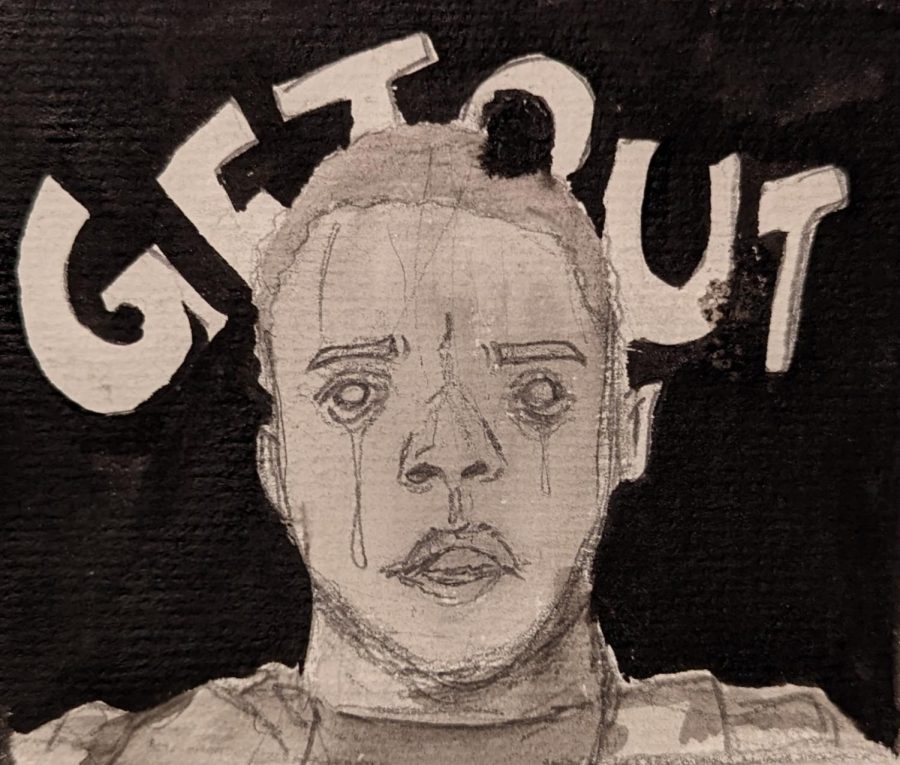Can Horror Save Independent Cinema?
October 5, 2022
There’s no denying it: Horror movies are the last, best chance to save American cinema. In recent years, the movie industry has invested less and less money into independent filmmakers. Marvel makes movies with budgets up to $365 million, while those in which superheroes do not feature struggle to keep the lights on. This makes what’s happening in the horror genre all the more important. In just the last five years, movie-watchers have been treated to a stream of original, provocative movies like His House, Promising Young Women, Midsommar, and Bodies Bodies Bodies. Horror has always been a profitable bet at the box office, but recently, it has begun to earn respect as a canvas for high art, as demonstrated by the attention the Academy Awards paid to Jordan Peele’s 2017 horror debut, Get Out.
Get Out tells the story of Chris, a Black man who goes with his white girlfriend to meet her family. Upon reaching them, he slowly learns of their ill intentions with his body. Its release and success made it apparent that the horror genre has changed. Get Out grabbed at palpable and prevailing themes in today’s society and used them as a horror device. But Peele is far from the only director doing innovative horror. Filmmakers now are either using the standard framework of a horror film to display the terrors of the reality of living in America, or explicitly veering away from the framework, experimenting with what constitutes a horror movie. This metamorphosis of the genre is causing a rapid increase in horror movies during the last decade.
Horror films have been popular since the beginning of filmmaking as conjuring fear in an audience is an effortless way to increase engagement with the movie. The first horror film was made in 1896, called Le Manoir du Diable, literally translating to “The House of The Devil.” Naturally, as film advanced, horror movies made innate progressions using the power of new technologies. However, horror movies still followed a similar structure: the film will introduce a protagonist, followed by an encounter with a supernatural threat, and conclude with a solution or a cliffhanger.
Almost all of these movies were directed by white men, for white men, and about white men. When observing mainstream horror movies from the 20th century such as A Nightmare On Elm Street, Halloween, Jaws, and Night of the Living Dead, it becomes evident that they all align structurally with the standard themes and framework. With this being said, the production of horror films that pushed the bounds of cinema and were not directed by white men still existed—for example, the 1977 Japanese film, House, is about six girls visiting their aunt’s haunted mansion. However, those types of films were more arthouse, and not as mainstream or potent in American horror cinema.
According to data by The Horror Project, around 200 horror movies were made in 2000, but the number had risen to 1,000 by 2016. In 2000, the structure and subject of horror movies that were being made became overused. By 2016, directors began to realize the opportunities the genre held, inspiring a movement of new and fresh horror for the mainstream. We’re All Going to the World’s Fair, a horror movie directed by Jane Schoenberg, follows Casey who joins a video game that possesses her. The film itself does not follow a traditional horror plot, as the threat was never actually explained or defeated. The movie was instead about the feeling of not having control of one’s own body. The director who is nonbinary explained the film without mentioning transness being the feeling of gender dysphoria, but rather saying that they wanted “To do something that felt truthful to [their] coming-out process.” This is an example of using horror to show one’s reality while breaking out of the traditional framework.
Jordan Peele’s Get Out addresses claims by White Americans that racism is over since we are living in a world where a Black man can be president. When in truth, racism is just as alive as it’s always been—it’s only hidden under “white politeness.” Although Get Out has the standard introduction to the protagonist, a supernatural threat, and then a solution, following the previously mentioned traditional framework, it also uses this structure to illustrate real horrific issues. These problems would not normally reach audiences in this way if the movie had been made in a different genre.
Get Out ends with a traditional solution, in which Chris escapes and wins against the bad guys, but it wasn’t actually supposed to end that way. Jordan Peele had planned to end it with Chris ending up in prison, alluding to the systemic racism of incarceration. However, he felt that it deserved to conclude happily, even if it wasn’t entirely realistic because he felt like people had already seen enough Black men being wrongly arrested and killed. Jordan Peele was able to use horror to show the reality of America and simultaneously fictionalize it to change the narrative itself, exemplifying all the possibilities horror has as a genre.
And lucky for us, as audience members, this artistic renaissance seems to only be hitting its stride. 2022 has already been filled with new horror releases like Pearl, X, Nope, Men, Umma, and many more. In future years, we can only expect horror to become more and more popular, and change not only what we think of cinema, but also what we think of life.
This piece also appears in our September 2022 print edition.









